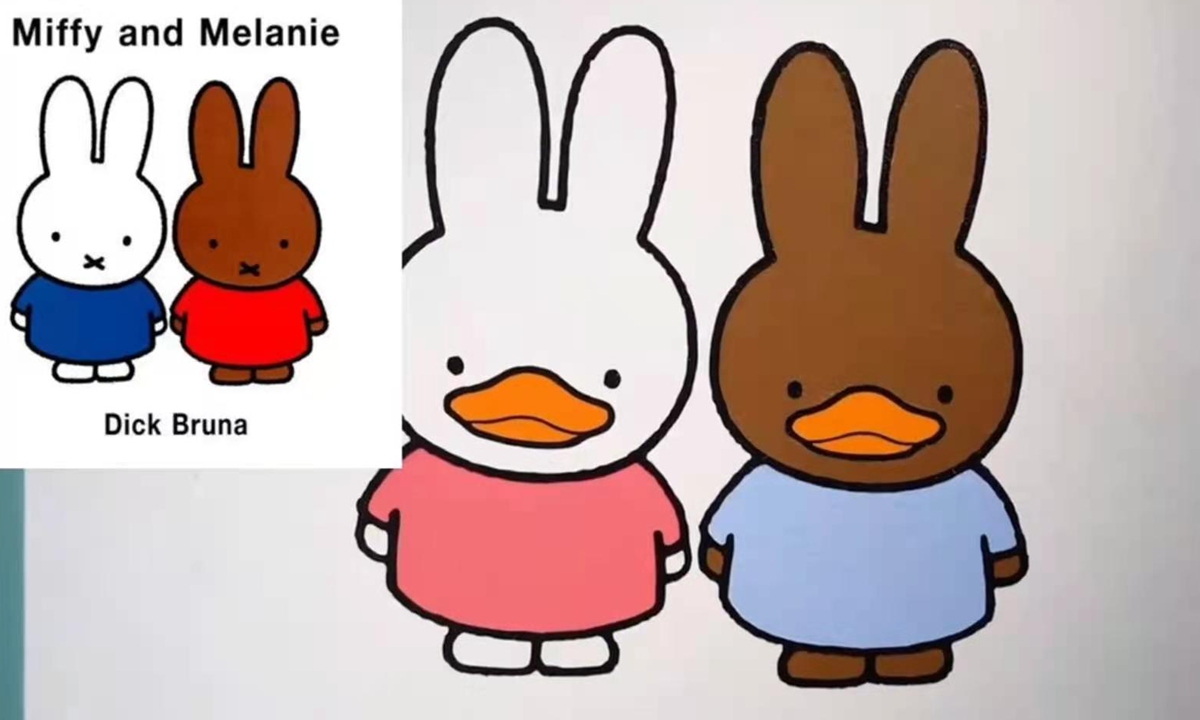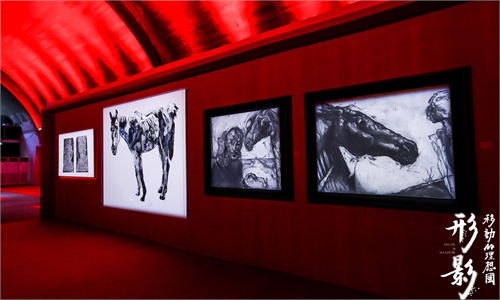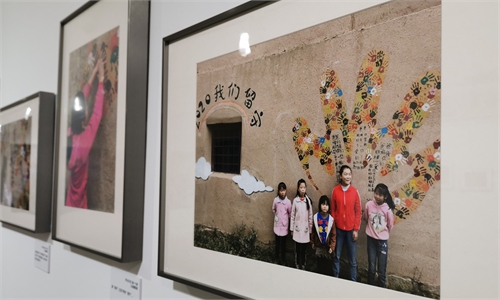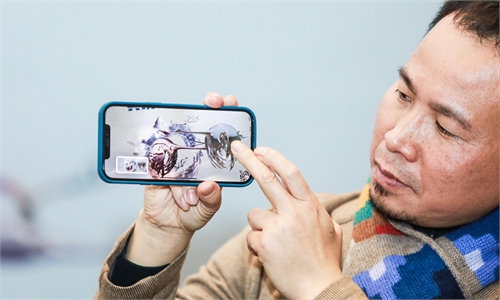ARTS / ART
Chinese art professor accused of copying classic Miffy character for his ‘Rabbitduck’ invention

Bruna's Miffy character in comparison with Feng's rabbitduck. Photo: Weibo
Rabbitduck, an adorable cartoon character that took a Chinese art professor 30 years to conceive, has recently become the target of criticism due to its similarities to Miffy, the lovable rabbit figure created by Dutch artist Dick Bruna almost 70 years ago.
At the exhibition Feng Feng: Rabbitduck Egg in Guangzhou, South China's Guangdong Province, in January, Rabbitduck could be seen wearing a one piece, with two dotted eyes and a pair of distinctive long ears on a tiny round face. It stunned audiences not only for its cute looks but also for its character that looks exactly like Miffy except that it has a duckbill instead of a cross for a mouth.
As the father of Rabbitduck, Feng Feng, a professor at China's Guangzhou Academy of Fine Arts, explained to media that his project was inspired by the famous ambiguous duck-rabbit illusion noted by both philosopher Ludwig Wittgenstein and psychologist Joseph Jastrow. The project then went through some other phases such as creating a "new species" based on the illusion, turning it into a cartoon figure with personality, in other words, giving Rabbitduck a family and 23 classmates.
The artist's claim of the character being a "new species" has been questioned by netizens on Chinese social media platform Sina Weibo, with many saying Feng has beautified the fact that he copied the famous Miffy character.
"He talks nonsense in such an earnest way that I 'admire' him," posted one netizen on Sina Weibo.
"I'm confused by art most of the time, but this one is the clearest artwork I've ever seen, the clearest copied one," said another.
Miffy's official Sina Weibo account indirectly responded to the hot discussion soon after it went viral, emphasizing that Bruna was the creator of Miffy. In response, Feng clarified that he considers all public symbols as words that artists can use to make art.
"He was just half right about the 'public symbols' claim I think- because of course artists can use them in their work, like Andy Warhol and Wang Guangyi have.
"But, the point is, whether or not the artist's work has different meanings than the meaning of the symbol it includes. Did the artist create a new meaning by using the symbol in work?" He Guiyan, an art critic who specializes in contemporary Chinese art, told the Global Times on Sunday.
Feng's controversial character later received a direct response from Miffy's publisher, Mercis Publisher in the Netherlands when the organization sent the artist a letter to urge him to deal with the matter.
"There are several possibilities as to what the letter may say. It may ask Feng to stop the infringement, or compensate the company, or issue a clarification on public platforms," Gao, a law expert specializes in copyright law, told the Global Times on Monday.
According to a joint publication signed by Feng, the curator of Feng's art exhibition Fan Lin and the host gallery XY Gallery on February 5, Feng will hand over his controversial artworks to Mercis BV, which is the copyright owner of the Miffy character.
Additionally, Feng's scheduled exhibition at the XY Gallery was also terminated before its original date of March. The three parties have also agreed to permanently stop the exhibition or commercialization of the controversial works that have Miffy's imagery.
With a joint statement saying the matter is considered closed, Feng's Rabbitduck character seems to now be on ice.



